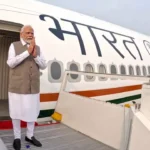
- China claims to have “reduced differences” and built “some consensus” with India regarding the disengagement process in eastern Ladakh.
- Both countries have agreed to maintain communication through diplomatic and military channels to resolve remaining issues.
- Talks focus on resolving friction points, including Demchok and Depsang, which have led to a prolonged military standoff.
How Close Are China and India to Resolving the Ladakh Standoff?
In recent developments, China and India have reportedly made progress in reducing tensions over the long-standing military standoff in eastern Ladakh. According to the Chinese Ministry of National Defence, both nations have “reduced differences” and built “some consensus” on disengaging troops from critical friction points. The dispute, which has caused strain in bilateral relations for over four years, particularly around areas like Demchok and Depsang, remains a complex issue. But how close are they to resolving this?
Chinese military spokesperson Zhang Xiaogang emphasized that under the guidance of both countries’ leaders, continuous talks have been held through diplomatic and military channels. These discussions included high-level meetings between Indian External Affairs Minister S. Jaishankar and Chinese Foreign Minister Wang Yi, as well as National Security Advisor Ajit Doval. While no final resolution has been reached, both sides agreed to continue negotiations and strengthen communication to accommodate each other’s concerns.
What’s Next for China-India Relations?
Although some progress has been made, Zhang refrained from commenting on the specific progress regarding disengagement from areas like Demchok and Depsang. He reiterated that both countries would continue to consolidate the outcomes of previous agreements and work towards a peaceful resolution. The focus is on maintaining peace and stability along the Line of Actual Control (LAC) through mutual respect for existing bilateral agreements and confidence-building measures.
This comes as a critical development, especially since tensions heightened in 2020 during the COVID-19 pandemic when Chinese forces moved troops in violation of previous agreements, as noted by Indian officials. Although this led to increased military presence on both sides, recent dialogues seem to have moved things in a positive direction.
In conclusion, while there is no final resolution yet, the commitment to dialogue and consensus-building between China and India suggests that both sides are determined to peacefully resolve the remaining friction points and restore stability to their borders. The future of their relationship will depend on how well these agreements are implemented on the ground, but the current tone of negotiations seems to offer hope for a peaceful solution.




































Leave a Reply